All roads still lead to China.
For importers trying to diversify, that’s the frustrating truth. The past few years have felt like a never-ending storm. Tariffs, COVID shutdowns, shipping chaos, and now another round of trade-war tensions in 2025 have threatened supply chain managers’ mental health. Every time things start to stabilize, another wave hits.
It’s no surprise that companies are pushing harder to work out their “China + 1” or even “China + 2” sourcing strategies. On paper, it makes sense: spread the risk, protect your margins, and gain flexibility. In practice? It’s not easy. Factories in Vietnam, India, or Cambodia may look promising, but matching China’s infrastructure, scale, costs, and consistency is another story.
That’s why diversification isn’t just about moving production. It’s about understanding who you’re moving it to and verifying that they can deliver on your brand’s standards. Due diligence isn’t a formality. It’s your insurance policy against the next unexpected shock.
Why China Still Sits at the Center of Global Manufacturing
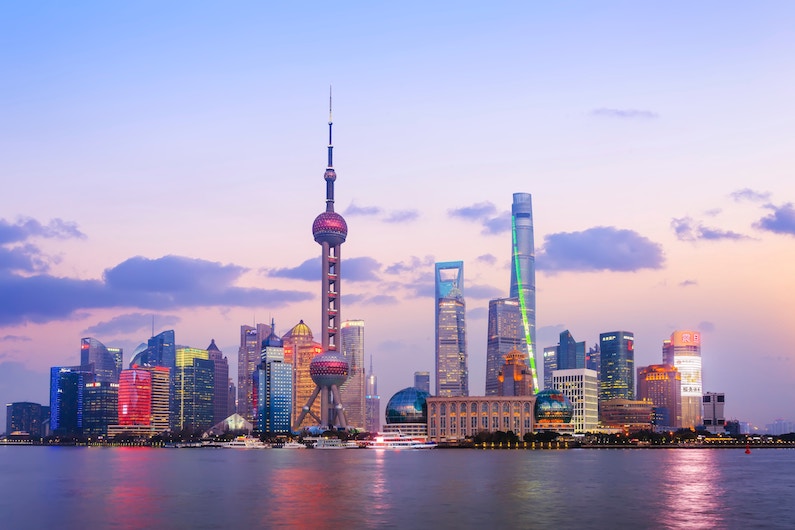
You can move a product’s final assembly line, but not an entire supplier ecosystem.
China’s dominance didn’t happen by accident. Over the past few decades, the country has built the most efficient and deeply integrated manufacturing network on the planet.
From raw material suppliers to tooling workshops to logistics hubs, everything is connected physically, digitally, and economically. That integration enables products to move through the supply chain faster, more cost-effectively, and with greater consistency than almost anywhere else.
The country’s infrastructure is world-class: highways, ports, railways, and industrial clusters that support specialized industries. Shenzhen and Dongguan for electronics, Ningbo for plastics, Yiwu for small commodities, etc. Decades of policy alignment, skilled labor training, and investment in automation have created a system that’s extraordinarily hard to rival.
Related Video:
That doesn’t mean diversification is pointless. It’s not. But importers should be realistic.
Vietnam excels in footwear and apparel. India has made strides in metals and hard goods. Thailand, Malaysia, and Indonesia have emerging strength in wood and home products. Yet none of these countries can match the scale, speed, or supplier depth that China provides, at least not yet.
For most importers, the goal isn’t to abandon China. The goal is to balance risk by finding complementary partners in other regions.
The Diversification Dilemma
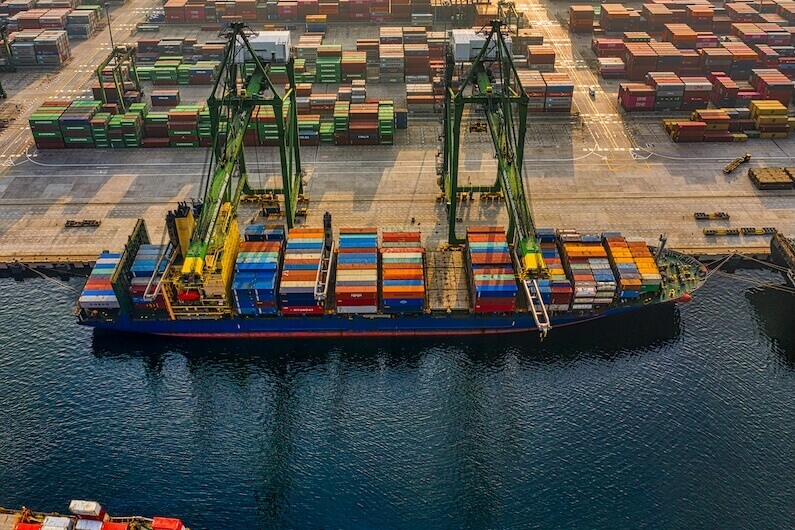
Every importer wants options. The logic is simple: spread production across countries, reduce dependency on China, and protect your business from the next tariff, lockdown, or policy shock.
However, finding good options is harder than anyone likes. That’s the hard truth.
In recent years, we’ve seen clients explore new sourcing destinations in Asia. Some countries can produce excellent goods in specific categories, such as metal pet bowls in India, wooden decor in Cambodia, or textiles in Vietnam. But when it comes to balancing price, capacity, and capability, the results often fall short of expectations.
Why? Many new suppliers can’t tick all the boxes that their established suppliers in China can. Sometimes the expertise is not there, or the costs don’t quite match expectations.
That’s why the smartest importers approach diversification with patience, rather than desperation. They explore new suppliers but assess them carefully before committing. They know that adding a new supplier to their matrix prematurely is a mistake.
And that brings us to the next crucial step: auditing.
Due Diligence: Your Best Insurance in a Messy Trade War

A supplier audit gives you a snapshot of a factory’s real operations, not just what they claim in emails or presentations. It indicates whether they have the necessary systems, controls, and accountability to meet your expectations consistently.
A strong audit doesn’t just check boxes; it connects the dots between what’s promised and what’s actually happening on the factory floor.
If you have the in-house expertise, bandwidth, and travel budget, someone from your team can conduct the audit. If you don’t, however, it can be worthwhile to hire a partner like Insight.
Related Video:
At Insight, we design audits that align with our clients’ specific priorities. For example, some may focus more on quality systems and production processes. Others may need a deeper look at social accountability, environmental performance, or traceability, especially as regulations like the UFLPA raise the stakes for material origin and documentation.
When done right, an audit helps you answer the most critical question:
Can this supplier reliably support your brand for the long term?
You can’t control tariffs or policy swings, but you can control how well you understand the people and systems behind your supply chain.
What a Comprehensive Factory Audit Looks Like
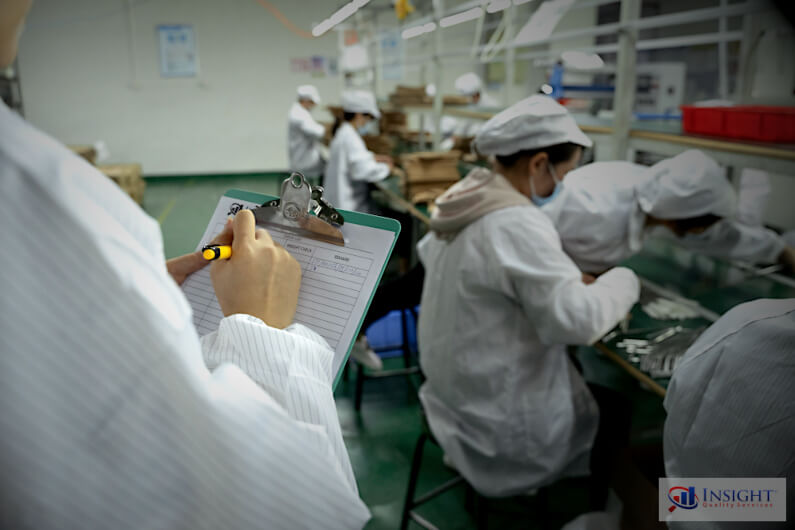
An audit isn’t a bureaucratic exercise; it’s a reality check.
At its core, a factory audit gives you a clear-eyed view of how your supplier operates day to day. It uncovers whether the systems, processes, and people behind your products are truly capable of meeting your expectations, not just once, but consistently.
A standard Insight factory audit checklist covers the key areas that determine a supplier’s performance and reliability:
- Facility safety and environment: Are the buildings structurally sound and compliant with local regulations? Are emergency exits clear and operational?
- Quality control systems and training: Do they have formal QC processes and trained inspectors, or is quality left to chance?
- Incoming materials and in-process QC: How are raw materials inspected, tracked, and stored? Are quality checks built into production, or are they done only at the end?
- Final inspection and packaging: How are finished goods verified, packed, and labeled for shipment?
- Handling of non-conformances and complaints: When things go wrong (and they will at some point), how does management respond? Is there a corrective action system in place?
- Communication and documentation: Do they have reliable order-tracking systems and English-speaking staff who can communicate clearly with your team?
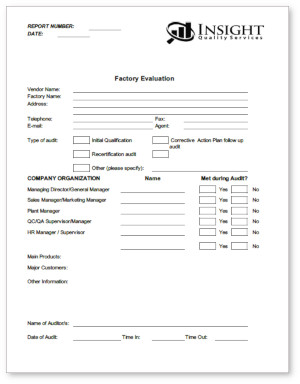
(Download: sample audit checklist)
Since every brand has different priorities, every audit should be custom-tailored. Do you prioritize sustainability, traceability, or ethical labor practices? Do you emphasize their ability to scale up production without cutting corners? Whatever your focus, the goal is the same: to turn assumptions into verified facts.
Navigating Uncertainty with Confidence

If the last few years have taught us anything, it’s that unpredictability is here to stay.
With trade wars, shifting tariffs, political tension, and new regulations, the only constant is change. But while you can’t predict every shock, you can prepare for them.
That means diversifying with intention, not panic. It means knowing which suppliers are ready for your next move and which aren’t. And it means verifying every assumption with facts on the ground, not just promises in an email.
At Insight, we help importers do precisely that. Our team conducts on-site audits across Asia and beyond, tailored to your priorities, from quality and safety to traceability and compliance. We provide you with the data, context, and clarity needed to make confident decisions in a chaotic world.
Exploring new suppliers? Let’s talk about how our team can be your eyes and ears on the factory floor.
Contact Insight Quality Services to discuss an audit program tailored to your needs.
You can also download our free guide to factory audits below.
Free Guide
How to Prepare for a Factory Audit
A factory audit helps you assess a supplier's systems, capacity, workplace environment, or capabilities to ensure they meet your requirements as a buyer.
But which type of audit should you conduct, and which points should you cover on your checklist? In this free guide, you'll learn how to run an effective supplier assessment.

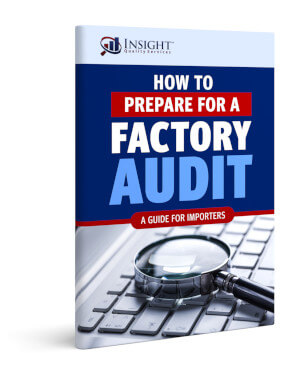

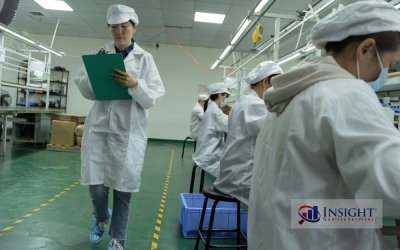
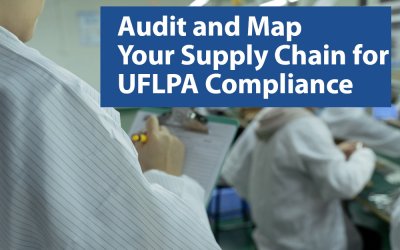
0 Comments